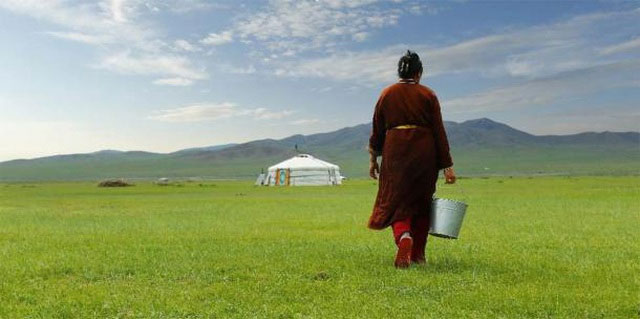Xiongnu, Asia’s first nomadic empire, leaves no known documents to explain their origins, making it a fascinating ancient genetic mystery.
New study sheds light on how the Xiongnu and Mongolian Empires as well as other ancient Central Asian cultures formed and interact with each other.
The last powerful nomadic empire was the Mongol Empire.
Researchers have carried out the arduous task of recreating the genetic history of Mongolia, 6000 years old, including the time of the rise and fall of the nomads, with startling results. .
A statement from the Max Planck Institute reports that there were a number of highly influential and organized nomadic empires that inhabited the Eastern Eurasian Plain between the late Bronze Age and the Middle Ages.
Xiongnu was the first, having a strong influence in the region from 209 BC to 98 AD. The last powerful nomad in the region was the Mongol Empire from 916 to 1125 AD.
Although these nomadic empires had significant geopolitical and demographic effects on Eurasia, there are still large gaps in knowledge about their origins and genetic relationships. they trained with others in the area. This is why new genetic research is so important.
The new study published in the journal Cell is the result of an international collaboration between researchers at the Max Planck Institute for the Science of Human History, the Mongolian National University and other partner institutions in Mongolia, Russia , South Korea and America. It is one of the largest studies of ancient genomes in East and Inner Asia to date, spanning 6,000 years – from 4,600 BC to 1,400 AD.
 The introduction of nomads made a big difference in the way of life in the region.
The introduction of nomads made a big difference in the way of life in the region.
To complete the mission, the researchers wrote that they had analyzed whole new genomic data from 214 individuals from 85 Mongolian sites and three Russian sites in the Baikal region. They combined this information with genomic data from 19 Bronze Age individuals from northern Mongolia and the accessible genetic dataset on ancient populations living near Russia and Kazakhstan. Finally, modern global reference populations have been added to the research mix.
The first point of interest mentioned by the researchers was the expansion of herders in Mongolia around 3000 BC, introduced by the Afanasievo culture from the Altai Mountains.
The introduction of nomads dramatically altered the way of life in the region, although migrants had little genetic impact on hunter-gatherers in ancient Northeast Asia (ANA) and ancestors of the Ancient North Asia (ANE) they encountered.
Another key point of the study is that the researchers found that by the end of the Bronze Age, three distinct biogeographic groups lived in western, northern, and south-central Mongolia.
Dr Christina Warinner, senior researcher at the Max Planck Institute for the Science of Human History, explains the significance of this finding: Lactase absence exists in the Mongolian population today and in the past. all challenge current medical models of lactose intolerance, suggesting that breastfeeding history is much more complex. Scientists are looking to the gut microbiota to understand how populations cope with a dairy diet.
The three biogeographic groups remained genetically separated for more than a millennium, until the widespread appearance of equestrian mounts, at the end of the second and the beginning of the first millennium. BEFORE CHRIST.
1000 years after the Afanasievo culture, another group from the steppe called Sintashta came to the region and made fateful cultural changes to the grasslands of Mongolia.


